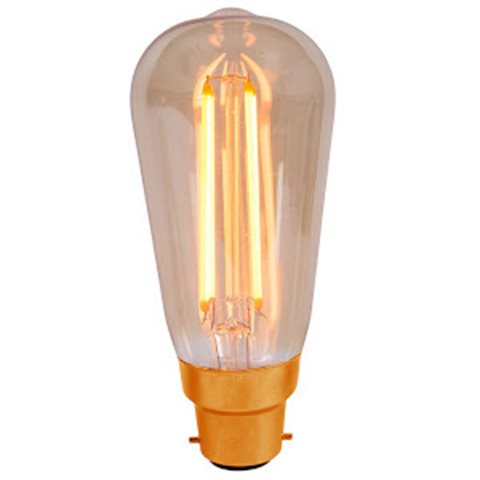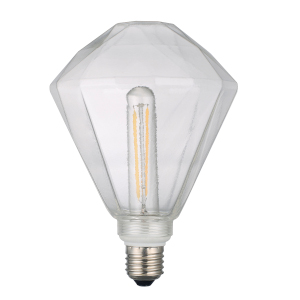 The History of the Light Bulb
The History of the Light Bulb
Ask the question: ‘Who invented the light bulb?’ and chances are people will say Thomas Edison. Yet whilst it’s certainly true that the American inventor created a commercially viable incandescent bulb, many others had put a lot of, er, ‘energy’ into the invention of electric light before him. To tell you more, Socket Store has compiled this not-so-brief history of the light bulb!
1802: For some time, inventors had been trying to convert electricity into light and finally a British chemist called Thomas Davy succeeded after creating an electric version of the recently invented battery. By attaching wires and a piece of carbon to his battery, he was able to generate a small but very bright light. His ‘electric arc lamp’ was much too bright and the light didn’t last for long – but he had invented electric incandescent lighting and paved the way for Edison.
1815: Davy studied gases, and a group of miners from Newcastle wrote to tell him of the dangers they faced of underground explosions, caused when their candles sparked methane gas. Davy invented a safety light called the Davy lamp; later that year engineer George Stephenson also produced a safety lamp.
1840: Another British scientist, Warren de la Rue, invented a glass bulb with a platinum coil inside, which lit up when an electric current was passed through it. De la Rue’s light was efficient and lasted longer than Davy’s, but platinum was too expensive to be used commercially.
1850: Joseph Swan was another English scientist keen to find a long-lasting light source. He started to develop a glass bulb using carbonised paper filaments but it was to be another decade before he had a working prototype.
1860: Swan obtained a British patent for a partial vacuum, carbon filament incandescent lamp. But the lack of a good vacuum and an adequate supply of electricity meant his device had too short a span to be truly effective.

1874: A patent was filed in Canada by Henry Woodward, a Toronto medical electrician, and Mathew Evans. Their lamps, made in different sizes and containing carbon rods held between electrodes in nitrogen-filled bulbs, worked well, but they couldn’t convert their idea into a successful business.
1878: The development throughout the 1870s of better vacuums had allowed Swan to improve his light and, in 1878, he gave the first public demonstration of his incandescent carbon lamp in Newcastle. But, after burning brightly for a few moments, the lamp broke down due to excessive current!
1879: On January 17, Swan successfully repeated the demonstration after refining his invention. His bulbs began to appear in homes throughout England, including Cragside in Northumberland, the first house in the world to be lit by hydroelectricity!
Meanwhile, on the other side of the Atlantic, Woodward and Evans had sold their patent to a certain Thomas Edison, an American inventor researching the development of a practical incandescent lamp. He experimented with thousands of filaments and discovered a carbon variety that could glow for up to 40 hours in an oxygen-free bulb without burning out. Edison continued to improve his bulb until he produced a bamboo filament version capable of emitting light for more than 1,200 hours. This became the standard for the next decade – during which time he also invented the Edison screw, which today remains the standard socket fitting for light bulbs!
1880: The Edison Electric Light Company began to market the incandescent light bulb.
1901: An American inventor called Peter Cooper-Hewitt created a mercury vapour lamp that was to become the direct forerunner of the fluorescent bulb. Despite radiating lots of blue and green light and hardly any red, Cooper-Hewitt’s arc lamp was extremely popular due to its efficiency; he claimed it was eight times as efficient as an incandescent bulb. However, within a few years his mercury bulb was falling behind the huge advances in incandescent lighting…

1906: Edison had long ago realised that tungsten would make the best filament but didn’t have the technology to develop his idea. The General Electric Company eventually patented a method of making tungsten filaments and refined their invention over the next few years.
1919: General Electric bought out the Cooper-Hewitt Company.
1927: A Russian radio technician called Oleg Losev published details of the first light emitting diode (LED) in a Russian journal after noticing that diodes used in radio receivers gave out light when a current ran through them.
In the same year, Berlin-born Edmund Germer patented a fluorescent lamp and in the 1930s developed a high-pressure variant of Cooper-Hewitt’s vapour arc lamp. His original low-pressure lamps had emitted large amount of ultra-violet light but Germer and his colleagues worked out that by coating the inside of the light bulb with a fluorescent chemical, the UV light would be absorbed and the energy re-radiated as visible light. The lamp therefore provided a more economical light with less heat.
1938: By now, GE had bought Germer’s patent and a group of scientists had improved his fluorescent light, leading to the first lamps being sold.
1962: The first red luminescence diode, developed by American Nick Holonyak, went on sale.
1971: Green, orange and yellow LEDs were produced – although the blue LED was to elude scientists for a further two decades.
1993: Shuji Nakamura from Japan developed the first blue LED, essential for producing white LEDs - which he later designed too.
1995: The first white LEDs went on sale.
 2006: LEDs with more than 100 lumens per watt were produced.
2006: LEDs with more than 100 lumens per watt were produced.
2014: Professor Nakamura, along with Professors Isamu Akasaki and Hiroshi Amano won the Nobel prize for physics in recognition of their breakthrough work on the blue LED. Professor Holonyak, now in his 80s, questioned why the work of his team had been overlooked.
The future of light bulbs… Watch this space!
